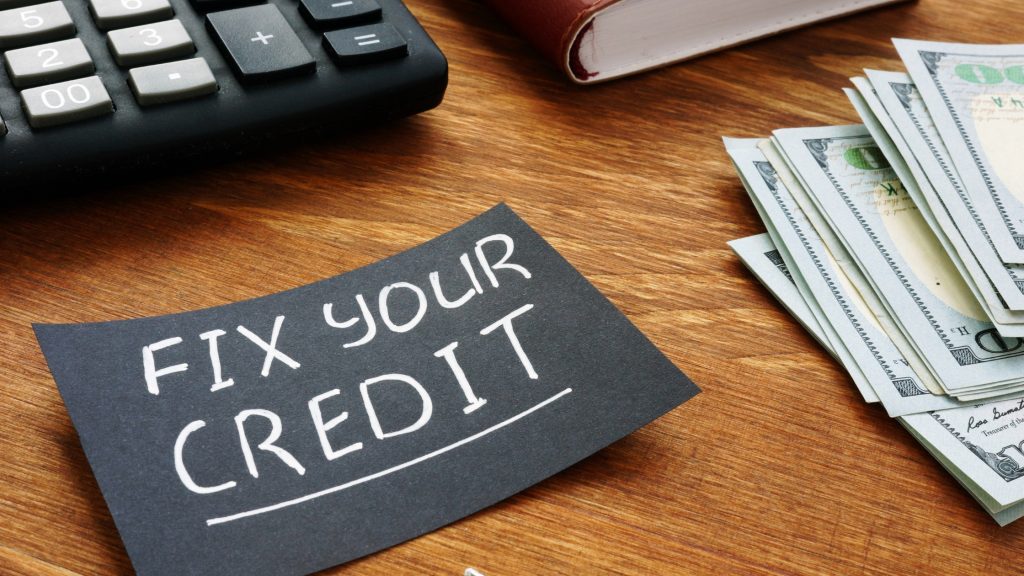A credit score is one of the crucial factors in one’s financial health. Loan approval, mortgages, interest rate and issuing credit cards depend on one’s credit score. If your credit score is slightly low, you can fix it yourself without hiring credit repair companies by following the necessary steps.
What is Credit Repair?
The credit repair process refers to the idea of repairing or improving inaccuracies or negative features (e.g, identity duplication, incorrect address, incorrect personal information) in an individual’s or company’s credit history. Through this process, a borrower with a lower credit score can get loans with better interest rates.

Step by Step DIY Credit Repair
1. Accessing Your Credit Report:
First, you must get your credit report to identify any problems. You should check for incorrect personal details (name, address, social security number, etc.), late payment reports, fraudulent activity, and duplicate accounts.
2. Disputing Errors on Credit Reports:
You need to file a dispute online or by mail if you have errors in your credit report. First, you need to gather proof, such as a bank statement or payment confirmations. Second, you must write a dispute letter to the credit bureau explaining your mistake. Finally, submit it to the credit bureau and wait for a response, which is typically within 30 days.
[Note: If the credit bureau cannot verify the debt, it must be removed from your report.]
3. Paying Off Past-Due Amounts:
If you have late payments, start paying them as soon as possible. Then, contact creditors to negotiate payment plans and ask them for “pay-for-delete” agreements, which remove the debt from your report after payment. In terms of huge payments, prioritise high-interest debts first
[Note: Payment history makes up 35% of the credit score. So paying on time is essential.
4. Reducing Credit Utilisation:
Credit utilisation is the percentage of one’s available credit that a person is using. You shouldn’t use more than 30% of your credit limit to avoid high interest rates. Try to pay down balances before the payment deadline. A balanced credit utilisation may help you ask for more credit limits (but don’t increase spending).
5. Build Positive Credit History:
Your responsible credit habits can make the path easy for you to build a positive credit history. To create this, you should use a secured credit card. You need to become an authorised user by adding a trusted and reputable credit card. You can also take a credit builder loan, which can help improve your score over time. Try to make small purchases and make timely payments.
[Note: A long-lasting credit history is the key to a good credit score. So, keep old accounts open.]
6. Avoiding New Inquiries:
Applying for new loans within a short period can gradually decrease your credit score. So, avoid applying for multiple credits at the same time. Apply for new credit only when it is necessary.
7. Reminding payments or setting up Automatic Payments:
Late payment has a profound effect on a credit score. To avoid late payments, set automatic payment options. For example, using software for auto-payment or a calendar as a reminder.
[Note: A missed payment can directly drop 50-100 points of credit score.]
What are the Common Credit Repair Mistakes to Avoid?
- Close old credit accounts to shorten your credit history.
- Prevent sending the bills to collections. Even small bills can hurt credit scores.
- Avoid credit repair scams that make false promises, such as “quick fixes.”

How Long Does Credit Repair Take?
Credit repair duration depends on the financial situation. Some possible timelines are:
- Fixing minor errors: 30-60 days
- Recovering from late payments: 6-12 months
- Paying off debt & reducing utilisation: 3-6 months
- Rebuilding from collections or bankruptcy: 1-7 years
[Note: Negative items stay on the report for 7 years, but the impact fades over time.]
What should be practised to maintain a High Credit Score?
- Regular monitoring of credit reports for errors or fraud.
- Keeping credit utilisation low
- Making timely payment
- Maintaining a mix of credit Types – Credit cards, loans, and retail accounts help.
- Avoiding multiple credit applications at once
Repairing credit is sometimes time-consuming. But by following the DIY (Do-It-Yourself) steps, you can easily restore your credit. Once you understand the procedure correctly, it won’t take much time or be hard.

